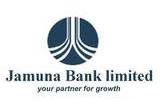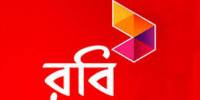Introduction:
The Bangladesh Development Bank Ltd that came into being through the merger of the Bangladesh Shilpa Bank (BSB) and the Bangladesh Shilpa Rin Sangstha (BSRS), two public- sector specialized development banks, has already passed its 2nd year of operation. From the early part of the nineties, the two development financing institutions (DFIs) stopped extending new loans and concentrating more on existing projects that had not gone sick. The banks have been provisioning against the bulging non-performing loans (NPLs) with whatever amount of operating profits that they have earned since then. This has resulted in some decline in their respective NPLs. The rate of default on the repayment of loans by most borrowers was very high, over 90 per cent in the mid-eighties, leading to their extreme sickness. There is no denying that the two DFIs have gone far away from the very objectives behind their establishment. This is partly due to the delinquent borrowers and partly for inefficiency and irregularities in sanctioning of loans. A large part of the DFIs’ loans has turned bad and they are finding it hard to write off the same because of inadequate collaterals.
Objectives of Merger of BDBL:
BDBL has been formed with the following objectives:
To mobilize the two big stagnant organizations (BSB & BSRS)
To expand network of the Bank
To reduce the rate of default on the repayment of loans
To be competitive with other banks & financial institutions
To launch new products & services
To maintain continuous improvement in business policies & procedures
To maximize profits by sound financial performance
To contribute more to the country’s overall development
Pre-Merger Performance of BSB & BSRS:
About BSB:
Bangladesh Shilpa Bank (BSB) was established under the Bangladesh Shilpa Bank Order 1972 (Presidential Order No. 129 of 1972) on 31 October 1972 to provide credit facilities and equity support to industrial enterprises in Bangladesh. It was the prime development financing institution (DFI) in the country for extending financial assistance for industrialization. It prioritized, especially, Export Oriented/Export Linkage industrial units, Efficient Import Substitution, Joint Ventures, Commercialization of local technology and promotion of agro-based industry. Other especially encouraged sectors were: Spinning, Specialized textile, terry Towel, knit composite, leather processing, chemicals, industries based upon the technologies developed by BCSIR, etc.
In addition to extending long and medium term loan facilities in local and foreign currencies to industrial projects (both new and BMRE) in the private and public sectors as well as partnership & proprietorship concern, BSB provided financial and technical assistance to broaden the private as well as public sector industrial base of the country; provided working capital loans to Industrial units, issued guarantees on behalf of borrowers for repayment of loan; extended commercial banking service along with deposit mobilization, forex business, L/C handling, forex remittances inland & outland; purchases and sells shares/securities for BSB and on behalf of customers as a member of Dhaka Stock Exchange (DSE) Ltd. and Chittagong Stock Exchange (CSE) Ltd. for capital market.
However, the bank demonstrated a deteriorating trend in profitability since 1994. The main reason for losses is the huge amount of non-performing stuck-up loans for which the bank has to maintain large amount of provision from its profit each year. Borrowed funds constitute a major source of the bank’s lending assets and posting of accrued interest in interest suspense account has lowered its net interest income. Having 15 branches across this country, this specialized bank emerged as a profitable entity in fiscal 2006-07 for the first time since fiscal 1992-93. It has a total of 674 members of staff and about Tk 2.5 billion (250 crore) as classified loans as far back as in 2007. According to the latest data, the BSB has 31 per cent of assets in the form of bad loans at close of fiscal 2008-2009.
Previous Performance of BSB at a Glance:
(in million taka)
Particulars | Year | ||||
2008-09 | 2007-08 | 2006-07 | 2005-06 | 2004-05 | |
| Sanction: | |||||
| Term Loan | 436 | 918 | 1006 | 1311 | 1009 |
| Working Capital Loan | 10 | 3 | 105 | 232 | 14 |
| Disbursement: | |||||
| Term Loan | 616 | 384 | 534 | 485 | 144 |
| Working Capital Loan | 22 | 33 | 196 | 32 | 21 |
| Recovery & Others: | |||||
| Loan Recovered | 908 | 981 | 1065 | 1159 | 1391 |
| Rephased/Rescheduled | 264 | 423 | 280 | 790 | 259 |
| Loan Written-off | 12258 | 12531 | 12478 | 12626 | 11867 |
| Financial Highlights: | |||||
| Paid-up Capital | 2000 | 2000 | 2000 | 2000 | 2000 |
| Total Capital | 3453 | 3265 | 3027 | 2588 | 2253 |
| Capital Surplus/(Deficit) | 917 | 2204 | 1953 | 1863 | 1532 |
| Total Assets | 11550 | 11687 | 12443 | 12707 | 14012 |
| Total Deposits | 676 | 707 | 656 | 655 | 710 |
| Total Loans & Advances | 8064 | 7660 | 8165 | 7892 | 8911 |
| Total Contingent Liabilities | 638 | 744 | 805 | 1193 | 1099 |
| Credit Deposit Ratio (%) | 1193% | 1083% | 1246% | 1205% | 1254% |
| % of Classified Loans against Total Loans & Advances | 27% | 29% | 28% | 33% | 41% |
| Operating Profit | 312 | 463 | 353 | 360 | 55 |
| Profit after Tax and Provision | 198 | 248 | 79 | 335 | (220) |
| Amount of Classified Loans | 2209 | 2234 | 2248 | 2604 | 3665 |
| Provisions Kept against Classified Loans | 1152 | 1058 | 1076 | 1199 | 1347 |
| Provision Surplus/(Deficit) | 25 | 33 | 61 | – | – |
| Cost of Fund (%) | 6.57% | 7% | 5.17% | 8.62% | 9.60% |
| Average Interest Earning Assets | 6203 | 5562 | 5693% | 8342 | 9214 |
| Non-interest Earning Assets | 5347 | 6125 | 6749 | 4366 | 4798 |
| Return on Investment (ROI) (%) | 14% | 16% | 8% | 8% | 6% |
| Return on Assets (ROA) (%) | 2% | 3% | 4% | 3% | 0.39% |
| Income from Investment | 284 | 374 | 222 | 270 | 233 |
| Return on Equity (ROE) (%) | 6% | 10% | 17% | 14% | 3% |
| Earnings Per Share (Amount in Tk) | Tk 127 | Tk 163 | Tk 64 | – | – |
About BSRS:
Bangladesh Shilpa Rin Sangstha (BSRS) was established on October 31, 1972 under President’s Order No. 128 of 1972 with the unification of Pakistan Industrial Credit and Investment Corporation Limited (PICIC), Investment Corporation of Pakistan (ICP) and National Investment Trust Limited (NIT) located in Bangladesh with Tk. 50.00 million authorized capital and Tk. 50.00 million paid-up capital (Subsequently both Authorized and Paid-up capital was raised at different time in phases). The objective was to provide credit facilities vis-à-vis related assistance to large industrial concerns and to encourage/broaden the investment base in Bangladesh. It is one of the pioneering institutions in financing term loan to industrial concerning Bangladesh. Bangladesh Shilpa Rin Sangstha showed keen interest in the industrial development of Bangladesh accompanied with various steps to accelerate economic growth and development. Later on, Investment Advisory Centre of Bangladesh (IACB) was also merged with the Sangstha in 1987. At the initial stage, the Sangstha, used to receive significant foreign funds from World Bank, UNDP, Asian Development Bank, OPEC, Saudi Arabia, Germany and other countries for industrialization and to achieve the objective for which it was established. From 1972 the Sangstha granted term loans to various industries in different sectors of the economy.
Apart from development financing activities, it provided underwriting finance/bridge finance/debenture loans to Public Limited Companies. BSRS provided underwriting commitment to issuers of stocks and debentures. BSRS also floated and manages mutual fund thereby providing impetus to the capital market. It also regularly undertook transaction in the Dhaka Stock Exchange. BSRS had two commercial banking branches.
Since its inception up to 1985, the BSRS kept limited its activities to providing long-term loans and financing debentures. It then expanded its operations to support financial institutions in giving industrial credit and carried out merchant banking operations until 1995. Regrettably, however, BSRS’s role as a DFI started waning in 1990s with the private banks as well as Nationalized Commercial Banks’ (NCBs) increasingly getting involved in industrial financing. It could never undertake commercial banking in the true sense primarily due to absence of experienced personnel. During this period, the Government also planned several actions programmes for BSRS’s re-organization but none of these could be implemented. At the same time, BSRS’s manpower was declining in number due to limited recruitment on one hand and normal attrition through superannuation and golden handshakes on the other. Given an unattractive salaries compared to what private banks offer and also uncertainty about BSRS’s future, it has not been possible to attract or, for that matter, retain many competent hands.
The operational activities of this specialized bank came virtually to a halt, with classified loans accounting for 85 to 90 per cent of its total portfolio between 1998 and 2001. The bad loan portfolio, however, came down gradually as the bank more or less stopped fresh lending operations due to lack of funding support from the government as it had little or no deposit base.
Previous Performance of BSRS at a Glance:
(in million taka)
Particulars | Year | ||||
2008-09 | 2007-08 | 2006-07 | 2005-06 | 2004-05 | |
| Approval: | |||||
| Term Loans | 413.30 | 573.20 | 50.00 | 241.60 | 75.00 |
| Investment in Shares | 83.06 | 45.65 | 64.10 | 182.43 | 1.50 |
| Disbursement: | |||||
| Term Loans | 309.84 | 104.60 | – | 74.20 | 51.50 |
| Investment in Shares | 83.06 | 45.65 | 64.10 | 182.43 | 1.50 |
| Recovery: | 313.51 | 220.30 | 224.74 | 313.21 | 289.48 |
| Economic Highlights: | |||||
| Gross Investment | 3804.30 | 2968.80 | 84.29 | – | 598.64 |
| Job Creation (Nos.) | 2555 | 4315 | 179 | – | 223 |
| Financial Highlights: | |||||
| Paid-up Capital | 700.00 | 700.00 | 700.00 | 7000.00 | 700.00 |
| Reserves | 2104.92 | 1936.47 | 1805.43 | 1682.60 | 1566.70 |
| Borrowing/Term Debts | 43.80 | 51.10 | 58.40 | 65.70 | 73.00 |
| Total Assets | 4891.73 | 4658.22 | 4528.30 | 4493.21 | 4954.45 |
| Total Income | 400.18 | 359.76 | 304.85 | 301.91 | 222.34 |
| Total Expenses | 179.77 | 146.19 | 139.07 | 196.06 | 192.30 |
| Net Income before Tax | 220.41 | 213.57 | 165.78 | 105.85 | 30.04 |
| Net Income after Tax | 135.27 | 137.17 | 10578 | 85.85 | – |
| Tax Paid | 57.34 | 30.86 | 38.91 | 35.41 | 6.94 |
| DSL Payment to Govt. | 9.28 | 9.62 | 9.91 | 10.27 | 10.11 |
| Dividend to Govt. | 10.00 | 10.00 | 10.00 | 10.00 | – |
| Debt-Equity Ratio | 0.16:1 | 0.14:1 | 0.13:1 | 0.16:1 | 0.21:1 |
| Debt-Service Coverage (times) | 30.98 | 8.60 | 22.32 | 21.56 | 8.67 |
| Capital Adequacy Ratio (%) | 127% | 116% | 131% | 119% | 97% |
Current Performance of BDBL:
When BDBL was established, the global economy was passing through the worldwide recession, the worst since 1930s. Despite such challenge, it attained some achievements in 2010. Mentionable of those were:
Particulars | Amount (Tk) |
| Loan Sanctioned | 943,300,000 |
| Loan Disbursed | 900,800,000 |
| Loan Recovered | 1,705,200,000 |
| Paid-up Capital | 4,000,000,000 |
| Total Capital | 15,637,252,156 |
| Capital Surplus/(Deficit) | 6,632,500,000 |
| Total Assets | 27,518,805,883 |
| Total Deposits | 3,254,038,394 |
| Total Loans & Advances | 9.906,002,302 |
| Total Contingent Liabilities & Commitments | 621,557,574 |
| Credit Deposit Ratio (%) | 304.42% |
| % of Classified Loans against Total Loans & Advances | 31.31% |
| Profit after Tax and Provision | 664,450,526 |
| Amount of Classified Loans during Current Year | 124,293,000 |
| Provisions Kept against Classified Loans | 1,388,167,767 |
| Provision Surplus/(Deficit) | 280,923,134 |
| Cost of Fund (%) | 8.91% |
| Interest Earning Assets | 11,463,600,000 |
| Non-interest Earning Assets | 16,055,205,883 |
| Return on Investment (ROI) (%) | 52.75% |
| Return on Assets (ROA) (%) | 2.34% |
| Income from Investments | 837,929,718 |
| Earnings Per Share (EPS) | 16.11 |
| Net Income Per Share | 16.11 |
Comparison of Performance:
Despite consolidation process complexities, the overall performance of BDBL is much better in 2010 than the combined performance of BSB & BSRS in 2009. Following is the table that shows the summary of overall performance of BDBL compared with that of pre-merger BSB & BSRS.
Sl. No. | Description | BSB & BSRS Position as on December, 2009 | BDBL’S Position as December, 2010 | Increase or decrease (%) |
01. | Deposit | 143.00 | 325.00 | 127 |
02. | Loans & Advances | 1027.00 | 990.47 | (4) |
03. | DSL Paid | 55.34 | 55.16 | (0.32) |
04. | Balance of DSL | 316.22 | 261.06 | (17) |
05. | Income | 121.00 | 184.51 | 52 |
06. | Expenditure | 67.00 | 102.00 | 52 |
07. | Net Profit Before Tax | 53.55 | 82.51 | 54 |
08. | Loan Sanction | 109.84 | 94.33 | (14) |
09. | Loan Disbursed | 91.21 | 90.08 | (1) |
10. | Recovery of Loan | 106.58 | 170.52 | 60 |
11. | Recovery from Written-off Loan | 20.65 | 24.64 | 19 |
12. | Balance of Written-off Loan | 2437.96 | 2387.23 | (20 |
13. | Balance of Classified Loan | 293.20 | 310.17 | 6 |
14. | Rate of Classified Loan (Excluding Staff Loan) | 34.25% | 38.50% | 6 |
15. | Balance of Interest in Suspense | 139.36 | 125.32 | (10) |
16. | Shareholder’s Equity | 643.86 | 1563.72 | 142.87 |
Achievement of Objectives:
BDBL is moving forward with a view to achieving its objectives as stated in 4.2. The current position of achieving its objectives is described as follows:
ü The total asset of the bank was Tk. 1678.17 crore at the time of its embankment. In 2010, it rose to Tk. 2751.88 crore, showing a rise of Tk. 1073. 71 crore (along with Tk. 860.41 crore as revaluation of assets) over the previous year.
The customer’s deposit was about Tk. 143.00 Crore which increased to Tk. 325.40 crore in 2010, registering an increase of 127%.
The total loan amount recovered in 2010 was Tk. 170.52, which was 104.65% of the annual target.
The written off loan declined from Tk. 2451.00 crore to Tk. 2387.00 crore due to recovery of the said loan.
The bank earned an operating profit of Tk. 82.48 crore in 2010 which was the highest ever than former BSB and BSRS earned altogether.
Out of the profit of 2010, Tk. 5.00 crore has been paid to the Governments as dividend which is the highest ever than former BSB and BSRS earned altogether.
The bank had no current loan liability with Bangladesh Bank & the Government due to payment of the dues in time.
As per Basel-II, the bank had maintained adequate capital to mitigate its risk and thereby left a surplus capital of Tk. 663.25 crore.
The bank had kept sufficient loan provision as per instruction of BRPD circulars of the Central Bank and left surplus provision.
The bank had been rated A+ for Long Term Loan and ST-2 for Short Term Loan by the Credit Rating Agency, CRISL.
At present, BDBL has 21 branches in important commercial & geographical places all over the country.
BDBL is engaged in short-, mid- and long-term financing; commercial banking operation; foreign exchange services, capital market operation, etc.
The Bank has recently recruited 150 new officers in different grades and a good number of need-based training programs were designed and implemented.
Enhancement of Operational Capacity:
BDBL earned an operating profit of Tk. 82.48 crore in 2010 after charging Tk. 25 crore as past liability as retirement benefit for employees of the former Bangladesh Shilpa Bank. It is noteworthy here that the former BSB and BSRS combined had never earned this much operating profit in a particular year. The budget and actual performance of BDBL in 2010 is as follows:
Sl. No. | Particulars | Budget-2010 | Actual-2010 |
1. | Interest Income | 106.44 | 79.98 |
2. | Interest Expenditure | 12.42 | 11.52 |
3. | Interest Margin (1-2) | 94.02 | 68.46 |
4. | Investment Income Including Other Income | 58.10 | 103.79 |
5. | Total Operating Income (3+4) | 152.12 | 172.25 |
6. | Salaries & Allowances | 51.43 | 73.70 |
7. | Fixed Expenses | 4.90 | 3.87 |
8. | Variable Expenses | 12.89 | 12.20 |
9. | Total Operating Cost (6+7+8) | 69.22 | 89.77 |
10. | Operating Profit Before Provision (5-9) | 82.90 | 82.48 |
Figure: Budget and Actual Performance of BDBL during 2010
Improvement of Financial Position:
The total consolidated assets of the bank stood at Tk 2751.88 crore as on 31st December 2010, as against Tk. 1678.17 crore at the end of 2009, showing a growth of 64% over the previous year. The increase in asset value was mainly due to increase in cash and bank balances and also revaluation of fixed assets during the year.
The year-end consolidated liabilities (excluding paid up capital / shareholder’s equity) of the bank stood at Tk. 1188.15 crore in 2010, registering an increase by Tk. 153.85 crore over the year 2009 in absolute terms. The increase in liability was mainly due to growth in deposits and also because of higher provision for income tax, larger contribution to pension funds and others.
Consolidated shareholders’ fund in the form of equity stood at Tk. 1563.72 crore in the year 2010, as against Tk. 643.86 crore at the end of 2009, showing a growth of 142.87% over the previous year. The increase in shareholders’ fund was mainly due to increase in revaluation of fixed assets during the year.
Figure: Financial Position of BDBL against that of BSB & BSRS
Enhancement of Capacity to Adapt:
Capital Adequacy Ratio (CAR) is the measure of the financial strength and sustainability of a bank. CAR determines the capacity of the bank in terms of meeting the time liabilities and other risks such as credit risk, market risk, operation risk, etc. As on 31 December 2010, the Bank’s capital adequacy ratio stood at 28.08% (core capital 15.93% and supplementary capital 12.15%) as against 9% of total risk weighted assets set by Bangladesh Bank under Basel-II, which indicates Bank’s strong capital base. The following table shows it:
Year | Required Capital (in crore taka) | Reserve Capital (in crore taka) | Excess Capital (in crore taka) |
| 2009(BSB & BSRS) | 400 | 650.19 | 250.19 |
| 2010 (BDBL) As per Basel-2 | 400 | 1063.25 | 663.25 |
Figure: Required and Maintained Capital of BDBL
Improvement of Standards & Quality of Products:
In the pre-merger period, BSB and BSRS were engaged mainly in long-term financing. But the present BDBL is engaged in short-, mid- and long-term financing; commercial banking operation; foreign exchange services, etc. Besides the conventional banking, BDBL is focusing on the following banking activities:
SME Banking:
For enhancing domestic investment to meet rising demand for employment generation, women’s empowerment and regional development, the role of SMEs is indispensible. In line with the government’s and Bangladesh Bank’s policy guidelines, promoting a dynamic SME sector is a priority for the Bank. The bank has so far taken several steps in this regard, some of which are:
Authority to sanction and disburse of loan up to Tk.30lac at Branch level;
An SME cell in each branch to advise and assist interested entrepreneurs for setting up small and medium enterprises; and
A dedicated desk in each branch for encouraging women entrepreneur for setting up industries.
Retail Banking:
The bank has launched consumer’s credit and personal loan scheme under retail banking in 2010. The response is so far positive.
Green Banking:
Financing eco-friendly projects that help mitigate environmental degradation by lending more for renewable energy, effluent treatment plants and other projects is a priority for the Bank. Generation plants based on solar power, bio-gas and wind, and automatic brick manufacturing plants that use modern environment friendly technology are especially favored projects of BDBL. In accordance with the Bangladesh bank’s guidelines in this regard, BDBL has introduced internal environmental management to identify, and support such projects.
Credit Performance:
Top priority was given to realization of its loans for augmenting and recycling of the investable funds and maintaining satisfactory loan portfolio for increasing profitability. For regulation of loan accounts of the projects, the Bank undertook some laudable steps towards reshapement/rescheduling of sick/ closed/ stuck-up projects with waiver facilities where deemed appropriate. Bank formulated a lending policy and procedures with a view to providing speedy and efficient services to the clients in a consistent manner. The balance of loans and advances was Tk. 1027 crore in 2009 which declined by 4% to Tk. 990.60 crore in 2010. This decline was due to various reasons, the most notable of which were lack of interest among entrepreneurs for investment because of shortages of gas and electricity supply and the Bank’s paucity of investable fund. During the year 2010, BDBL’s sanction, disbursement, and recovery of loans as against 2009 were as follows:
Loan Type | Pre-merger (2009) | Post-merger (2010) |
| Loan Sanctioned | 109.84 | 94.33 |
| Loan Disbursed | 91.21 | 90.08 |
| Loan Recovered | 106.58 | 170.52 |
Figure: Comparison of Loan Sanctioned, Disbursed, and Recovered
Value Addition:
Value addition means the wealth created by the bank through its different banking operations. The value Added Statement shows the total wealth created how it was distributed to meet certain obligations and rewarded those responsibilities for its creation, and the portion retained for the continued operation and expansion of the bank. The value added statement of BDBL shows how the value is created and distributed to different stakeholders of the bank.
Value Added Statement of BDBL at the year-end of December 31, 2010 is as follows:
Sources of Fund | Amount in taka |
| Income from Services and Other Operations | 1733233071 |
| Less: Cost Of Services and Suppliers | (257155869) |
| Value Added | 1476077202 |
| Other Income | 104504062 |
| Total Value Addition | 1580581264 |
| Applied in the Following Ways:To Employees | |
| Salaries, Allowances and Other benefits | 341309344 |
| Contribution to Superannuation Fund, Provident Fund and Benevolent Fund | 396434395 |
| To Government | |
| Corporate Income Tax | 177937864 |
| To Provider of Capital | |
| Dividend | 50000000 |
| Retained by the Bank | |
| As Provision for Loans | 2400000 |
| As Depreciation | 18049135 |
| As Reserves | 591101778 |
| As Retained Earnings | 3348748 |
| Total Value Addition | 1580581264 |
Benefits of Stockholders & Stakeholders:
In the light of the proposed appropriation of profit for the year 2010, the Bank’s Board of directors has been pleased to recommend Tk. 5.00 crore as dividend to be paid to the Governments subject to the approval in the forthcoming Annual General meeting of the Shareholders. It is especially worthwhile to mention here that compared to the dividends the erstwhile BSB and BSRS combined paid to the Government for a particular year, this is the highest ever dividend to be paid by the Bank.
BDBL is an active member of DSE and CSE. During 2010, BDBL invested Tk 44.75 crore by purchasing shares of 84 companies from both Primary and Secondary markets. At the same time, BDBL sold shares of 173 listed companies valued Tk 100.20 crore in the Secondary market. In 2010, it was able to earn Tk 67.53 crore as capital gains and Tk 14.73 crore as dividends from such investment. Bank has already created a Subsidiary named BDBL Securities Ltd. and taken over one membership of DSE and of CSE.
The CSR activities of the Bank are based on ethical values following the triple bottom line: people, planet, and the profit and are in compliance with legal and regulatory requirements which encompasses employees, customers, business, associates, shareholders, suppliers, regulatory authorities and the community at large. The bank allocated Tk. 20 lac in 2010 under this head, but unfortunately the fund could not be utilized.
SWOT Analysis of BDBL:
SWOT analysis identifies the Strength, Weakness, Opportunities, and Threats of an entity. SWOT analysis can also be used to understand the overall position of a financial organization. The SWOT analysis of BDBL is described below:
Strengths:
BDBL is unique in nature having both specialized and commercial banking operations.
Its capital and asset basement is highly strong.
Owing to being a 100% state-owned bank, it has less risk than other entities.
It has a veteran management team.
It has recruited young, energetic and qualified officers who are capable of maximizing the use of bank resources.
Weakness:
Decision making process is lengthy.
Lack of promotional activities
Inadequate human resource
Less diversified product and service line
Opportunities:
Bangladesh economy is expanding rapidly, so the need of such development bank is growing up.
There are huge demands for micro-credit, SME finance etc. for which BDBL has the ability to lend.
The branches of BDBL are located in important commercial areas.
Being a 100% state-owned bank, it gets different facilities at home and abroad.
Threats:
Global economic slowdown
Shortage of branches
Lack of competition with private commercial banks
Absence of online banking system
Political turmoil may influence BDBL
Chapter Five: Conclusion and Recommendations
Conclusion:
Bangladesh Development Bank Ltd., a new bank created by merger of former Bangladesh Shilpa Bank (BSB) and Bangladesh Shilpa Rin Sangstha (BSRS), has just completed one year of operation. Though, it is new in name but it has a long origin since 1972 as pioneer partners in industrial financing. Bangladesh Development Bank Ltd. (BDBL) has now been mandated by the Government to run its original function i.e. industrial financing and all sorts of commercial banking activities along with Foreign Exchange Business and capital Market Operations.
The year 2010 was eventful for BDBL, as it had to spend most of its time in consolidation works of reform programmers through formulation of various policies, rules, regulation including many steps and measurer. As a part of overall financial system, it faced a number of challenges in 2010, which included inter alia (i) liquidity shortage (ii) increasing pressure in interest spread (iii)huge amount of classified and written off loan and (iv) implementing Basel II Accords, (v) controlling NPA and rollback impaired assets, etc.
It gave emphasis on providing financial assistance for setting up of viable projects having comparative opportunities, export prospects, forward and backward linkages and local technology as well as indigenous raw material based and eco-friendly projects. Commercial banking and capital market operation were also other area of businesses. The sources of the income attributed to interest income, income from investment, commission, exchange and brokerage fees, other operating income etc.
From the above findings, it can be concluded that the merger of BSB and BSRS into BDBL has added value to the overall development of our country’s economy as a whole. It is expected that if operated efficiently and effectively, BDBL will one day be one of the prime financial institutions in Bangladesh.
Recommendations:
While working as an intern in BDBL, I found some limitations of the Bank, which should be reduced to keep pace with the competitive world. The following points have been suggested for the Bank:
- The personnel of the Bank should be more sincere, attentive, and dedicated to their respective jobs.
- The number of employees should be enhanced.
- The new recruits as well as existing employees should be made skilled, efficient, and effective through proper trainings.
- Promotional activities should be launched and continued to inform the common people of the products & services.
- Online system of banking should be activated.
- More products should be included in the current product line.
- Information should be updated on a regular basis.
- ATM system should be introduced.
- Management team should be more active with up-to-date information.
- In order to contribute to overall development of the country, more branches should be introduced to the rural areas of the country.
Bibliography:
- DePamphilis, Donald (2008). Mergers, Acquisitions, and Other Restructuring Activities. New York: Elsevier, Academic Press. pp. 740. ISBN 978-0-12-374012-0.
- Cartwright, Susan; Schoenberg, Richard (2006). “Thirty Years of Mergers and Acquisitions Research: Recent Advances and Future Opportunities”. British Journal of Management 17 (S1): S1–S5. doi:10.1111/j.1467-8551.2006.00475.x.
- Harwood, I. A. (2006). “Confidentiality constraints within mergers and acquisitions: gaining insights through a ‘bubble’ metaphor”. British Journal of Management 17 (4): 347–359. doi:10.1111/j.1467-8551.2005.00440.x.
- Rosenbaum, Joshua; Joshua Pearl (2009). Investment Banking: Valuation, Leveraged Buyouts, and Mergers & Acquisitions. Hoboken, NJ: John Wiley & Sons. ISBN 0-470-44220-4.
- M&A insights: Up front – a fine balance [2]. M&A insights: Up front – a fine balance
- Fleuriet, Michel (2008). Investment Banking explained: An insider’s guide to the industry. New York, NY: McGraw Hill. ISBN 978-0-07-149733-6.
- Straub, Thomas (2007). Reasons for frequent failure in Mergers and Acquisitions: A comprehensive analysis. Wiesbaden: Deutscher Universitäts-Verlag (DUV), Gabler Edition Wissenschaft. ISBN 978-3-8350-0844-1.
- Scott, Andy (2008). China Briefing: Mergers and Acquisitions in China (2nd ed.).
- Aharon, D.Y., I. Gavious and R. Yosef, 2010. Stock market bubble effects on mergers and acquisitions. The Quarterly Review of Economics and Finance, 50(4): p. 456-470.
















